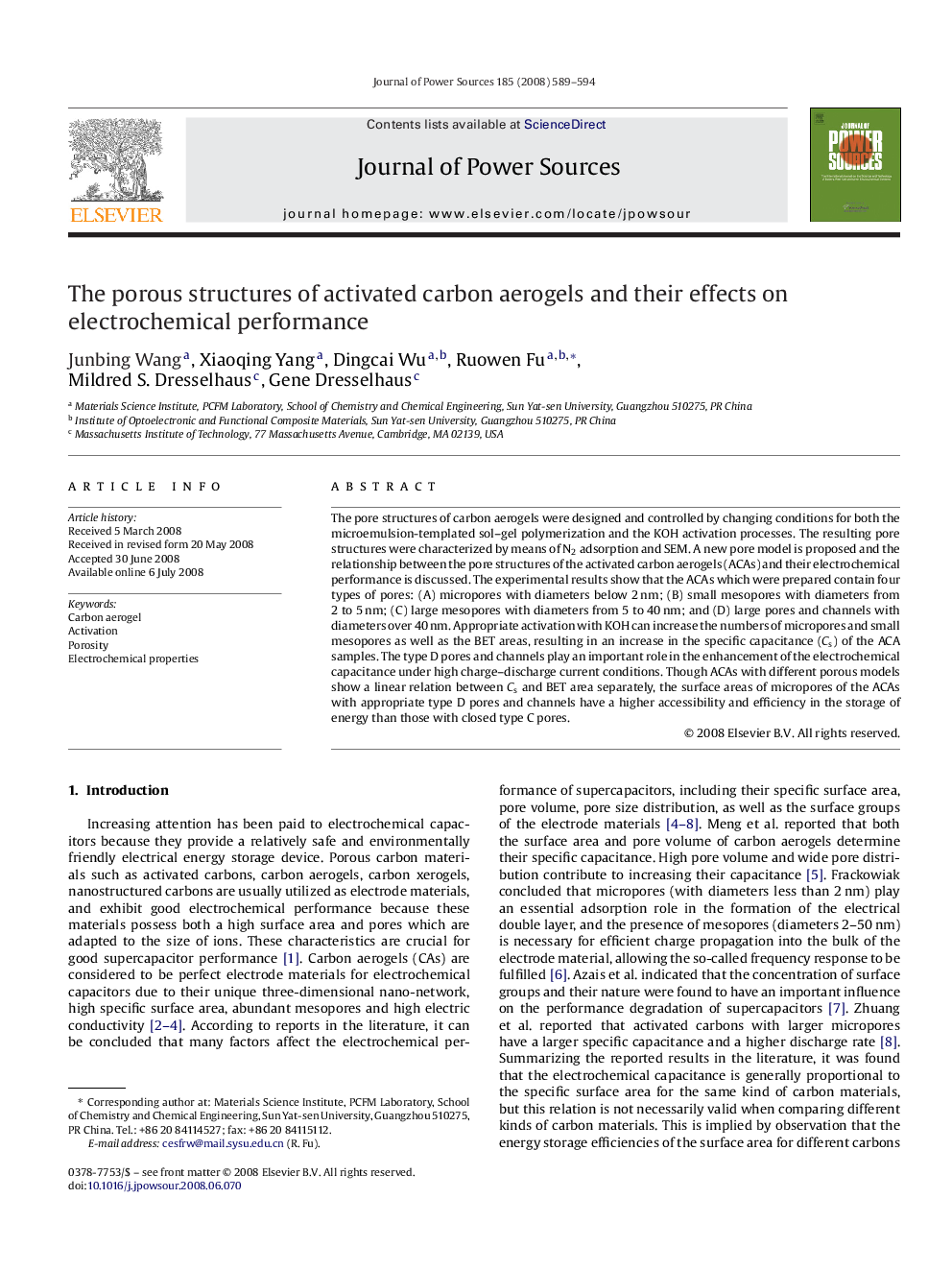| Article ID | Journal | Published Year | Pages | File Type |
|---|---|---|---|---|
| 1294454 | Journal of Power Sources | 2008 | 6 Pages |
The pore structures of carbon aerogels were designed and controlled by changing conditions for both the microemulsion-templated sol–gel polymerization and the KOH activation processes. The resulting pore structures were characterized by means of N2 adsorption and SEM. A new pore model is proposed and the relationship between the pore structures of the activated carbon aerogels (ACAs) and their electrochemical performance is discussed. The experimental results show that the ACAs which were prepared contain four types of pores: (A) micropores with diameters below 2 nm; (B) small mesopores with diameters from 2 to 5 nm; (C) large mesopores with diameters from 5 to 40 nm; and (D) large pores and channels with diameters over 40 nm. Appropriate activation with KOH can increase the numbers of micropores and small mesopores as well as the BET areas, resulting in an increase in the specific capacitance (Cs) of the ACA samples. The type D pores and channels play an important role in the enhancement of the electrochemical capacitance under high charge–discharge current conditions. Though ACAs with different porous models show a linear relation between Cs and BET area separately, the surface areas of micropores of the ACAs with appropriate type D pores and channels have a higher accessibility and efficiency in the storage of energy than those with closed type C pores.
